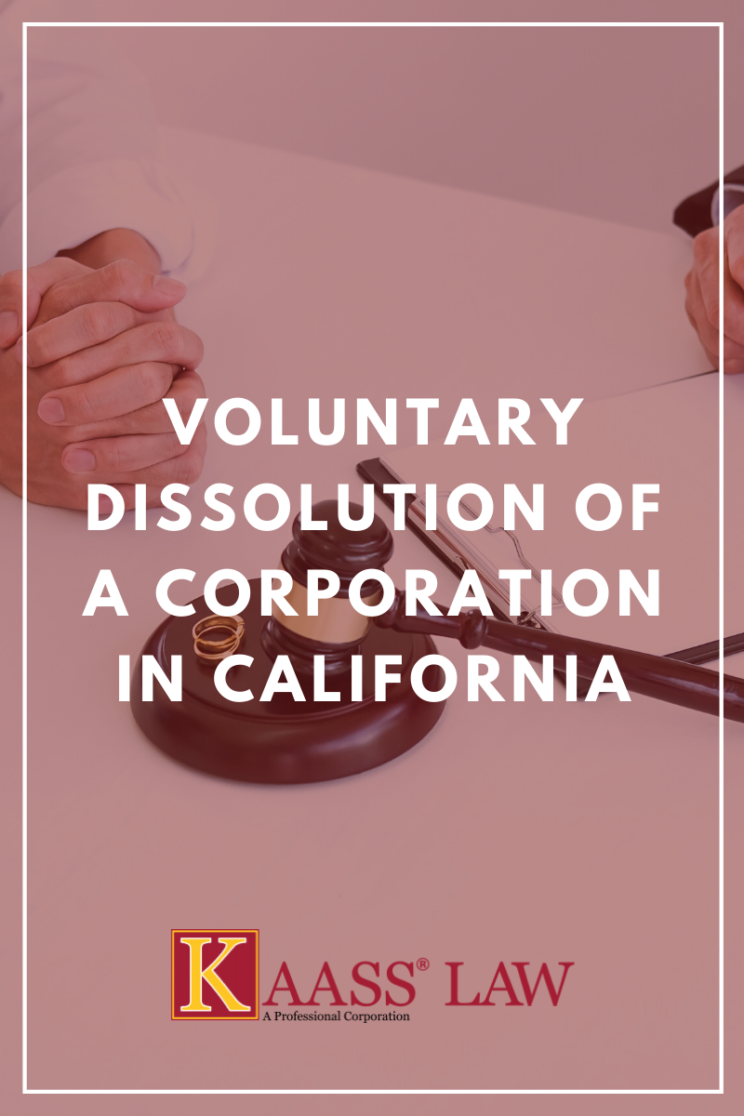How to Dissolve a Corporation in California?
The corporate existence of a corporation registered with the State of California can be ceased in two ways:
- Involuntary dissolution;
- Voluntary dissolution.
Each way of dissolution has its grounds and specific legal procedure. While a corporation may be involuntarily dissolved under a court decree, the voluntary dissolution is carried out by a corporation’s shareholders, as well as in special cases by the Board of Directors. Leaving the topic of involuntary dissolution for a separate discussion, the voluntary dissolution will be addressed within this article.
What are the Laws Covering the Issue of Voluntary Dissolution of a Corporation in California?
The Corporations Code of California, chapter 19, sections 1900-1907, covers the legal regulations pertaining to the procedure of voluntary dissolution. These rules help an interested person to comply with the requirements of the law in the process of voluntary dissolution.
Who is Entitled to Dissolve a Corporation?
In general, the voluntary dissolution may be initiated by:
- The shareholders of the corporation;
- The board of directors.
Shareholders may dissolve their corporation for a variety of reasons. In this regard, they are not accountable to anyone else. The decision to wind up and dissolve the corporation should be made by the vote of shareholders holding shares representing 50% or more of the voting power unless a higher threshold is prescribed for by the articles of incorporation. Whereas, the board of directors may approve to wind up and dissolve a corporation which comes within one of the following descriptions:
- It has issued no shares;
- It has been adjudicated bankrupt;
- It has disposed of all of its assets and has not conducted any business for a period of 5 years immediately preceding the adoption of the resolution electing to dissolve the corporation.
What are the Next Steps for Voluntary Dissolution?
Winding Up
Once the resolution on a voluntary dissolution is in place, the corporation steps into the stage known as “winding up”. This is aimed at finalizing the debt-clearance process. It assumes paying outstanding debts and discharging pending liabilities. Afterwards, the corporation resolves the issue of distributing the remaining assets to the shareholders entitled thereto.
Notification
The corporation is required to notify its creditors about commencing dissolution enabling them to submit their claims to the corporation. Such notification shall include all the relevant information necessary for sending claims, for instance the mailing address, the deadlines for submission etc.
Certificate of Dissolution
Further, you need to file a certificate of dissolution with the Secretary of State (SOS). The certificate of dissolution shall include the following information:
- a statement that the corporation has elected to wind up and dissolve;
- a statement that the resolution was made by shareholders representing at least 50% of the voting power;
- an assurance that all the debts are paid in full with no deficiency, as well as the corporation does not incur any liability;
- a statement that the corporation’s assets have been distributed properly;
- a statement affirming that a final franchise tax return for the corporation has been filed or will be filed
The form of the certificate can be found in the official website of SOS. The certificate must be submitted by via email or in person. Thereupon the corporate powers, rights, and privileges of the corporation ceases. The Secretary of State notifies the Franchise Tax Board of the dissolution.
Get Help for Voluntary Dissolution for a California Corporation
If you need to initiate and finalize the process of a voluntary dissolution of your corporation, we invite you to contact an attorney at KAASS LAW at (310) 943-1171 and speak to our Glendale business attorney to assist with the process.

